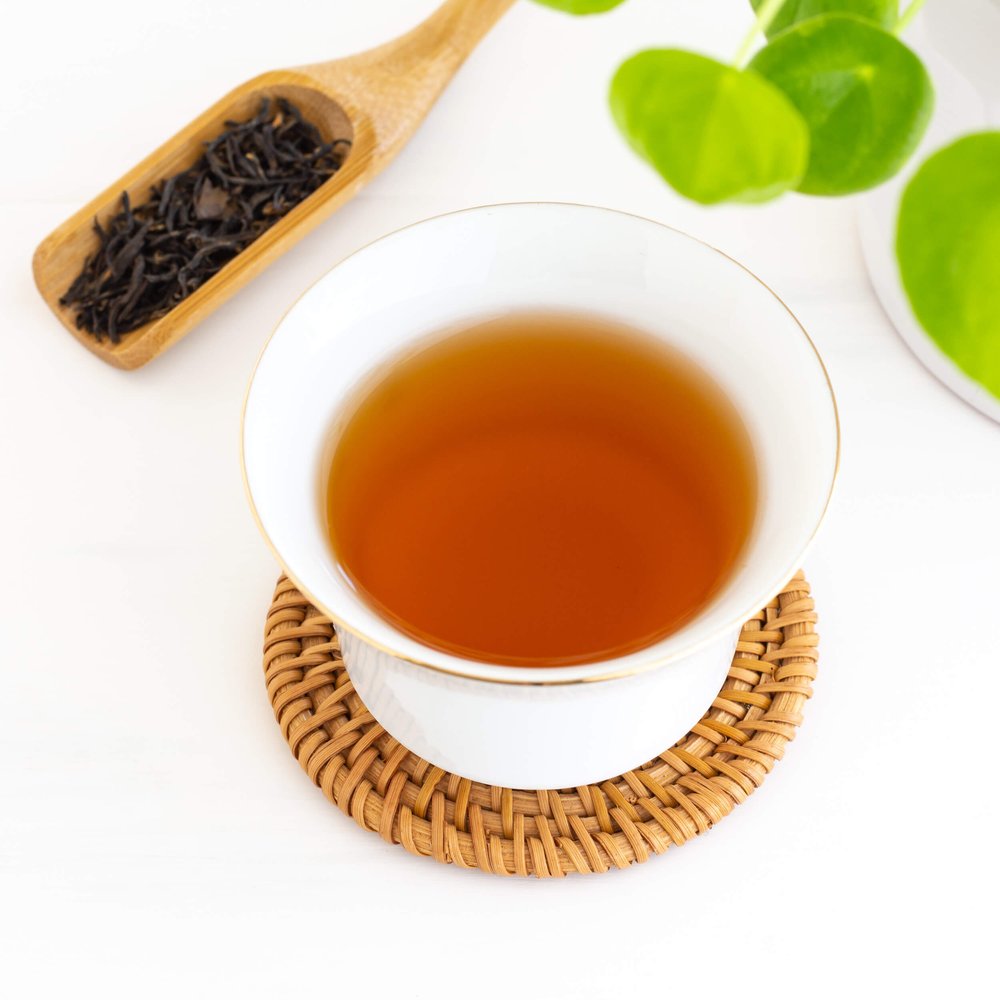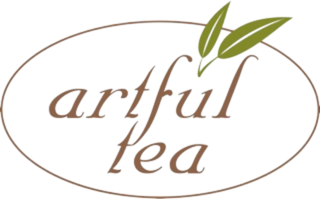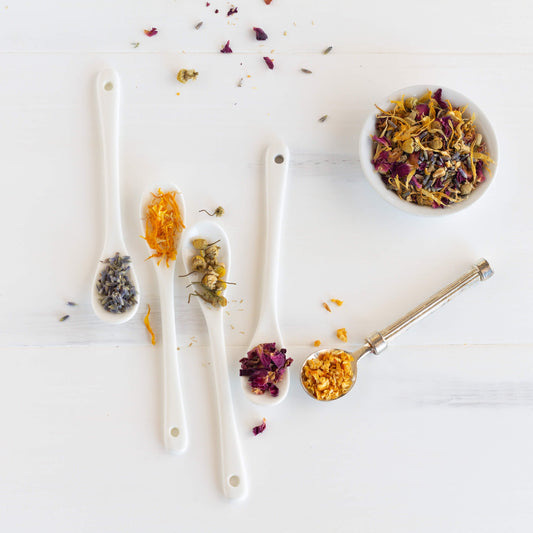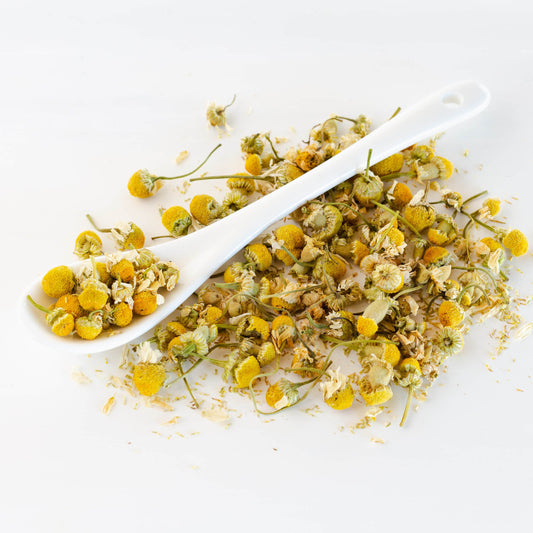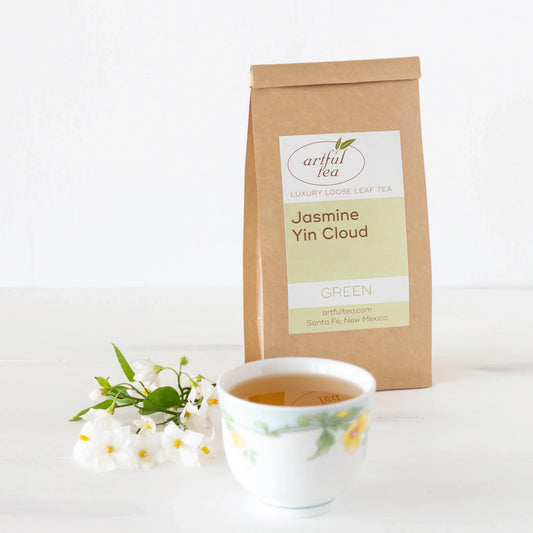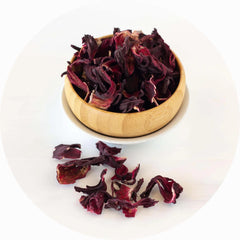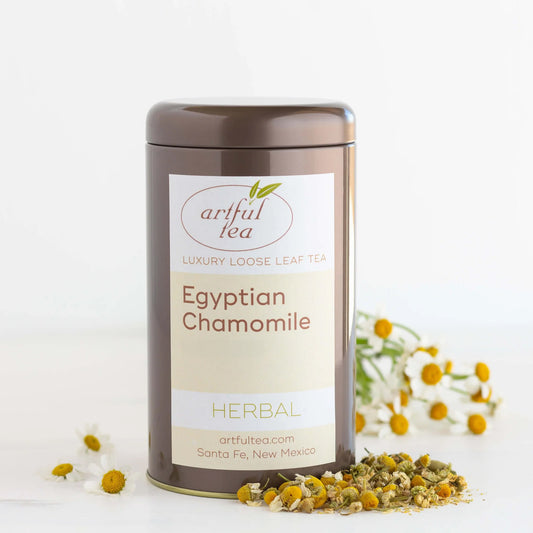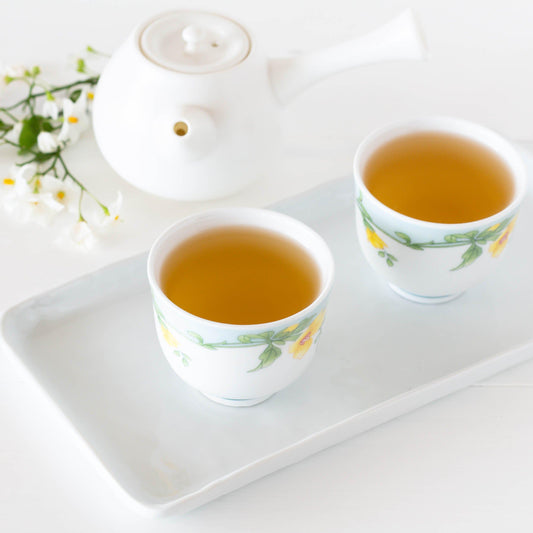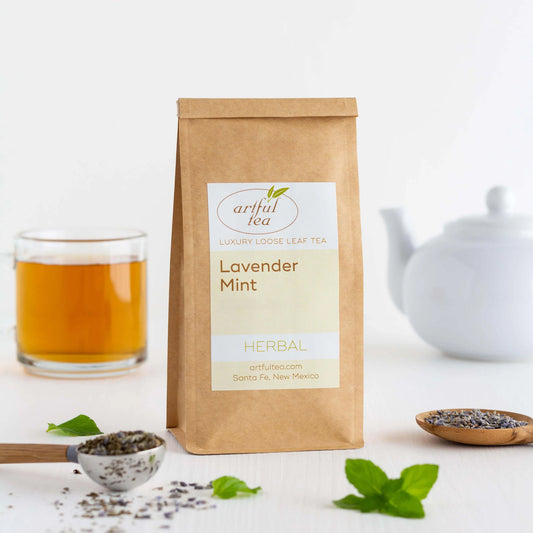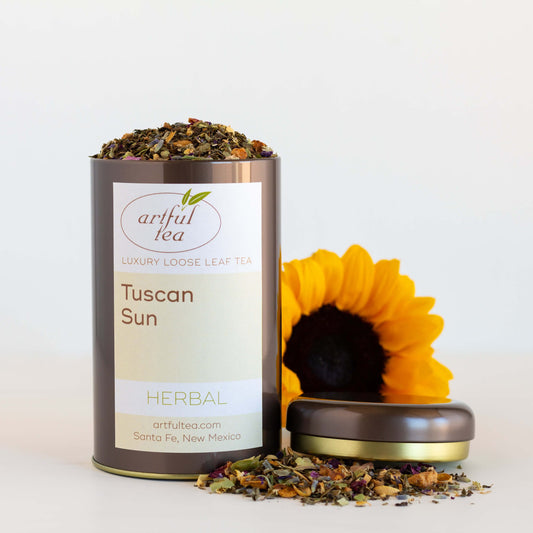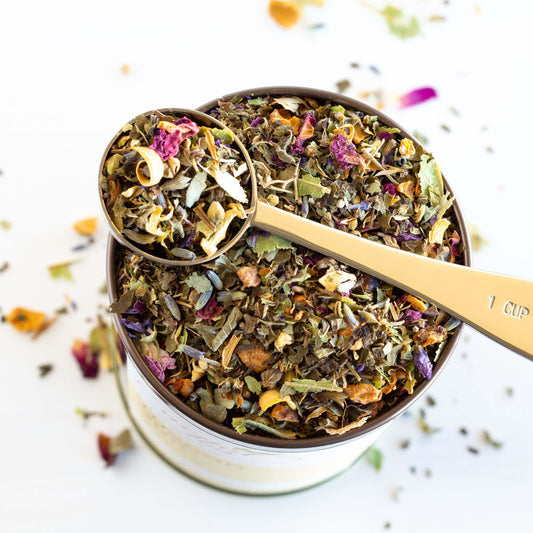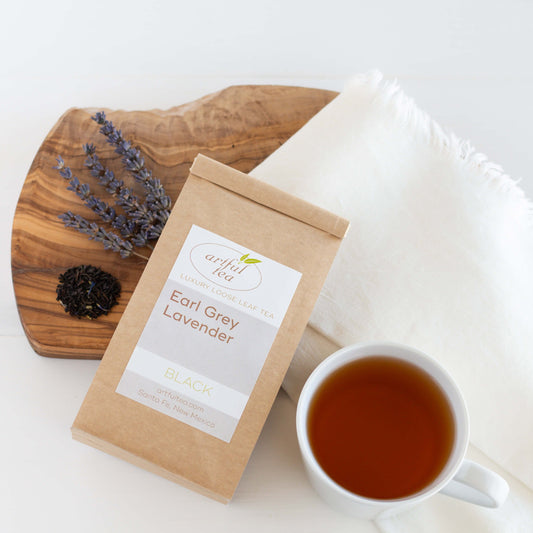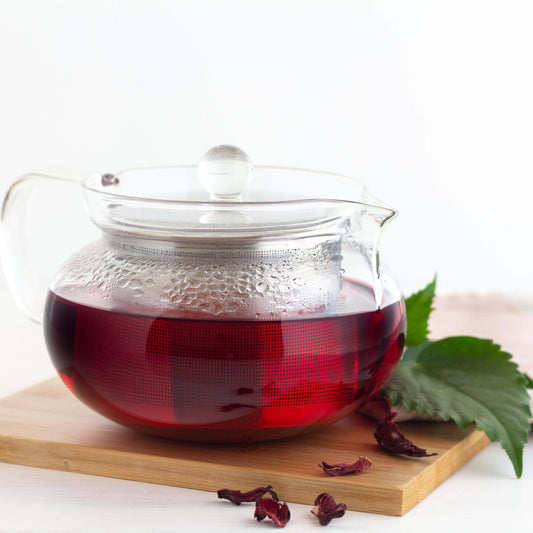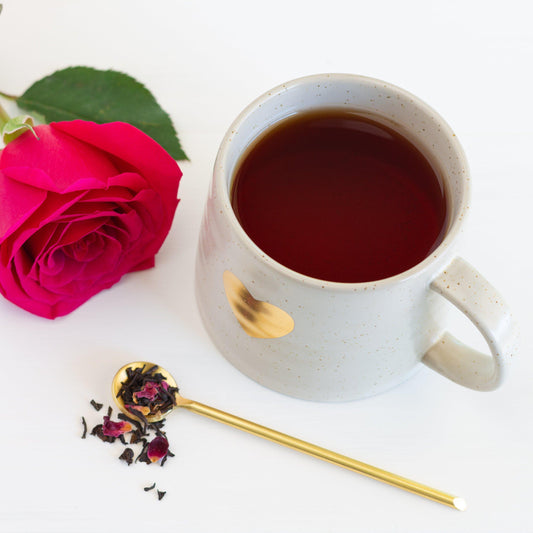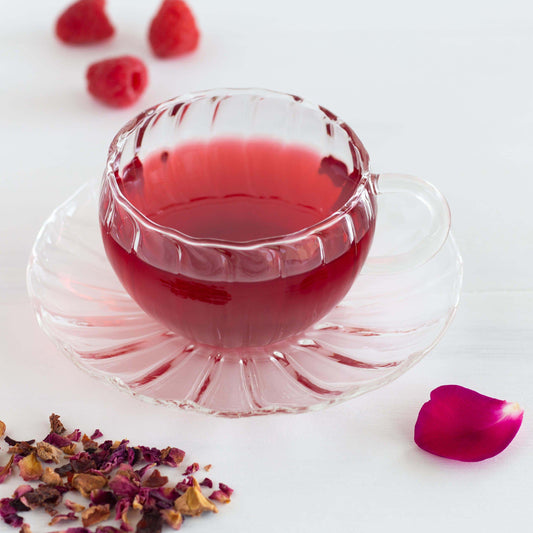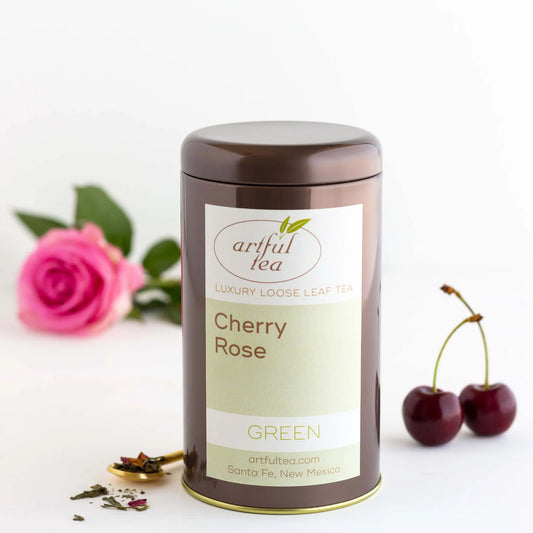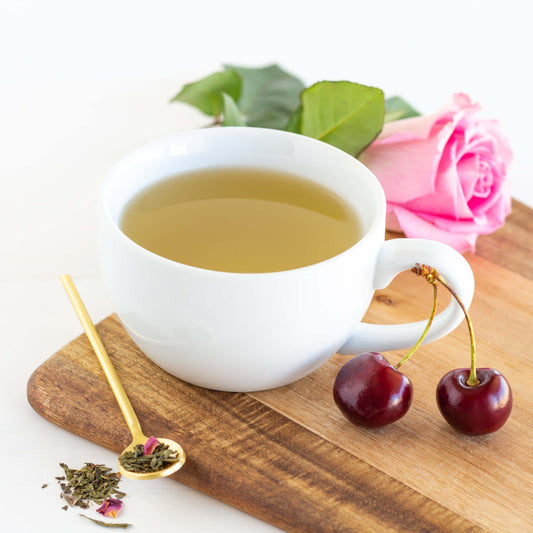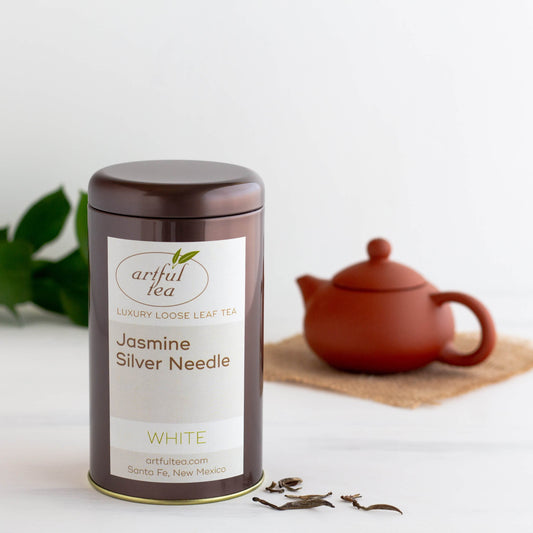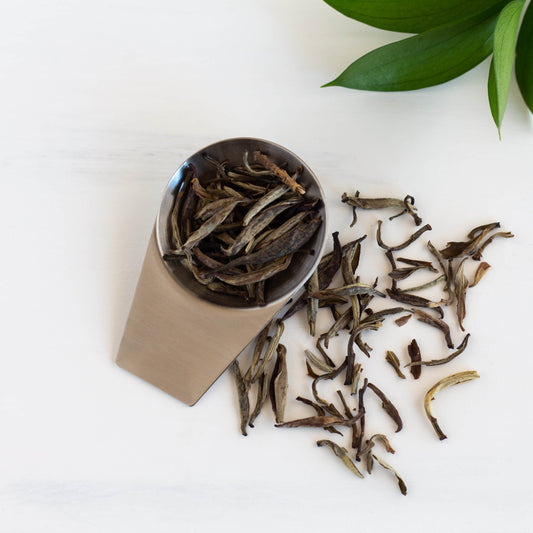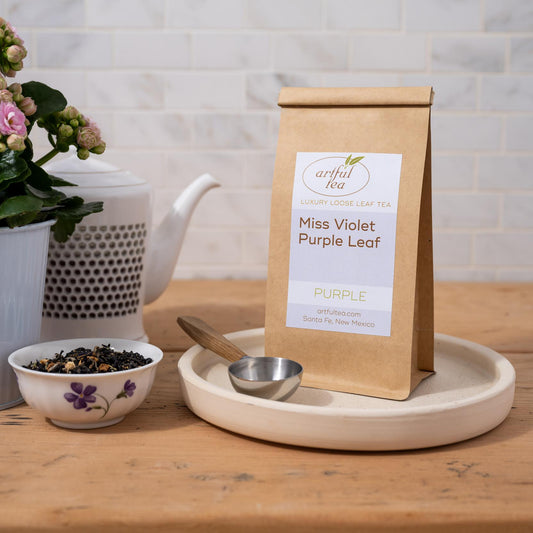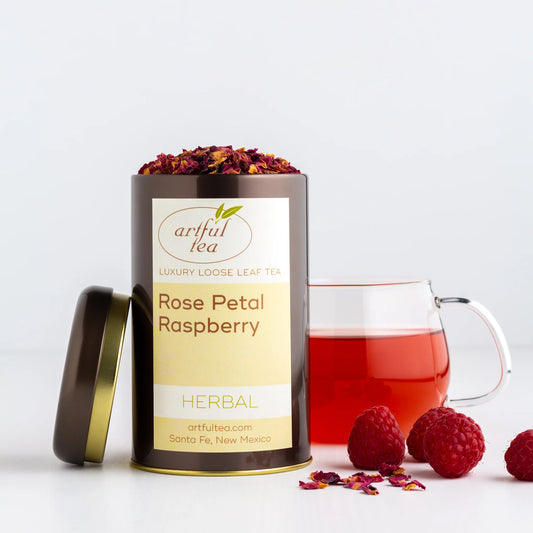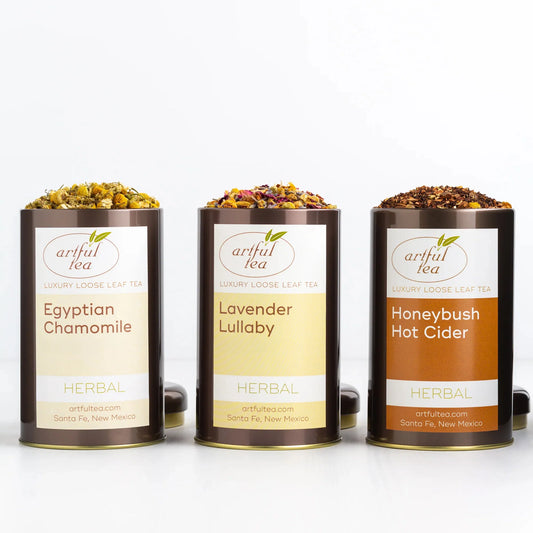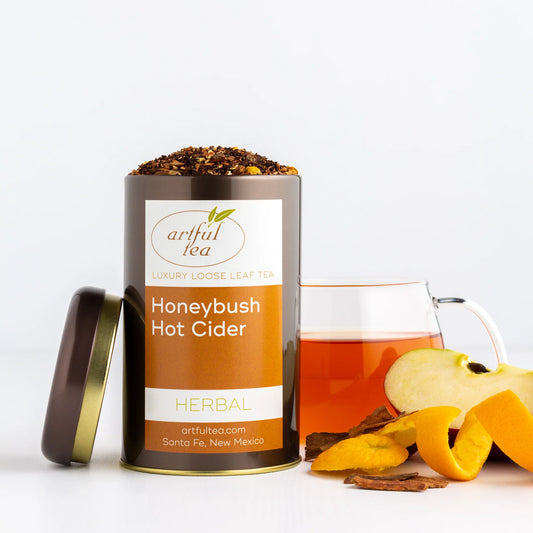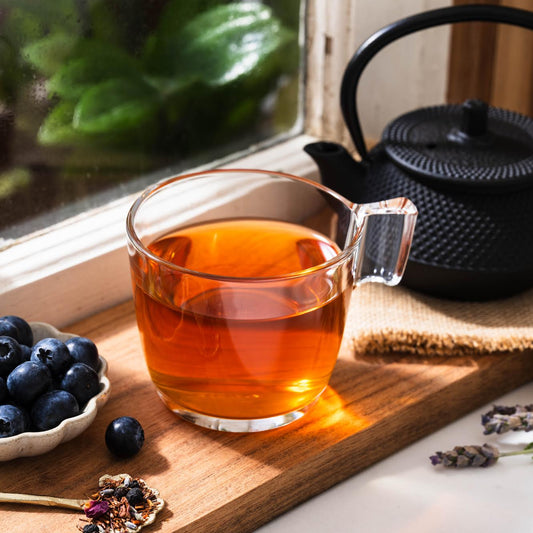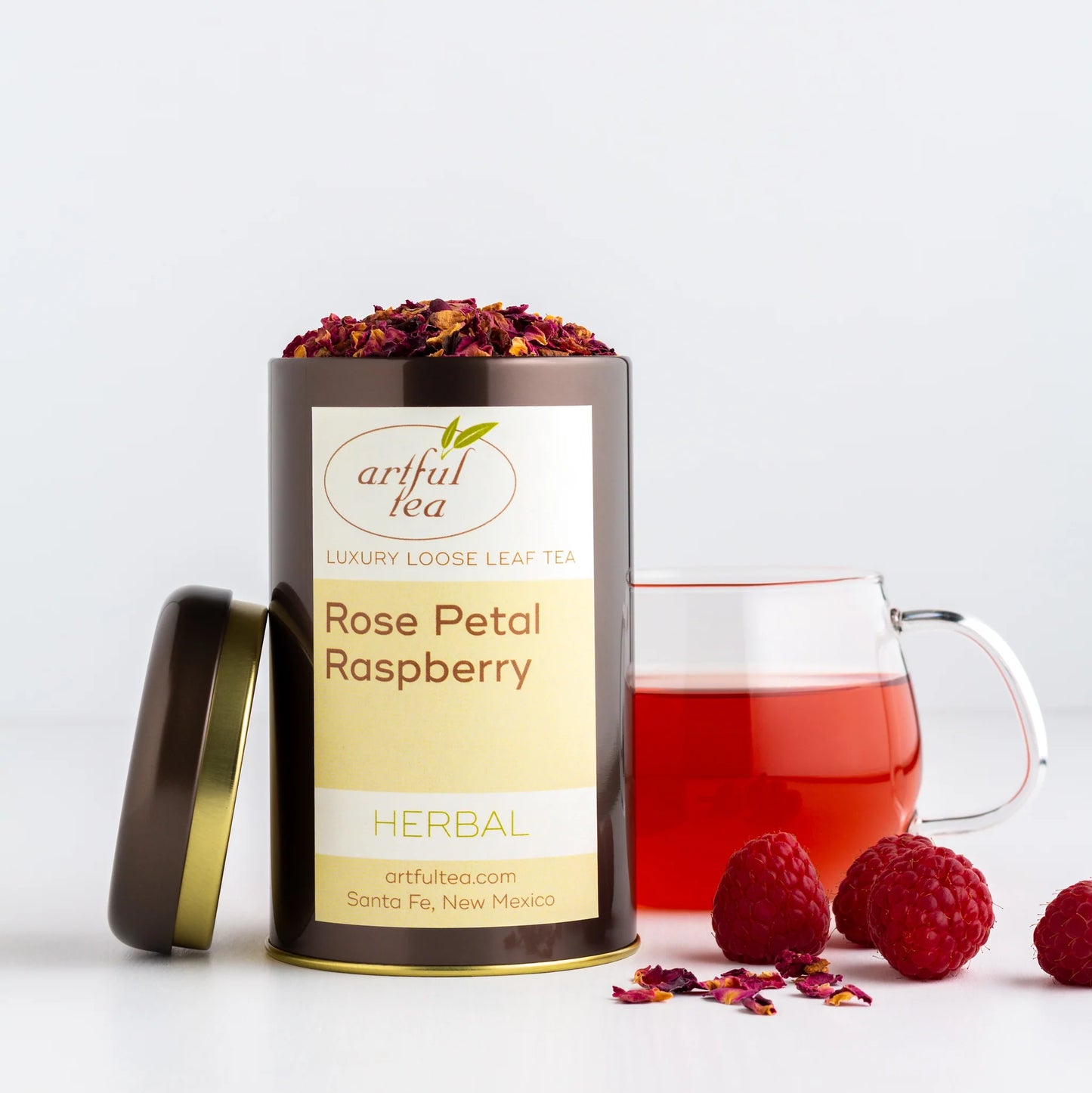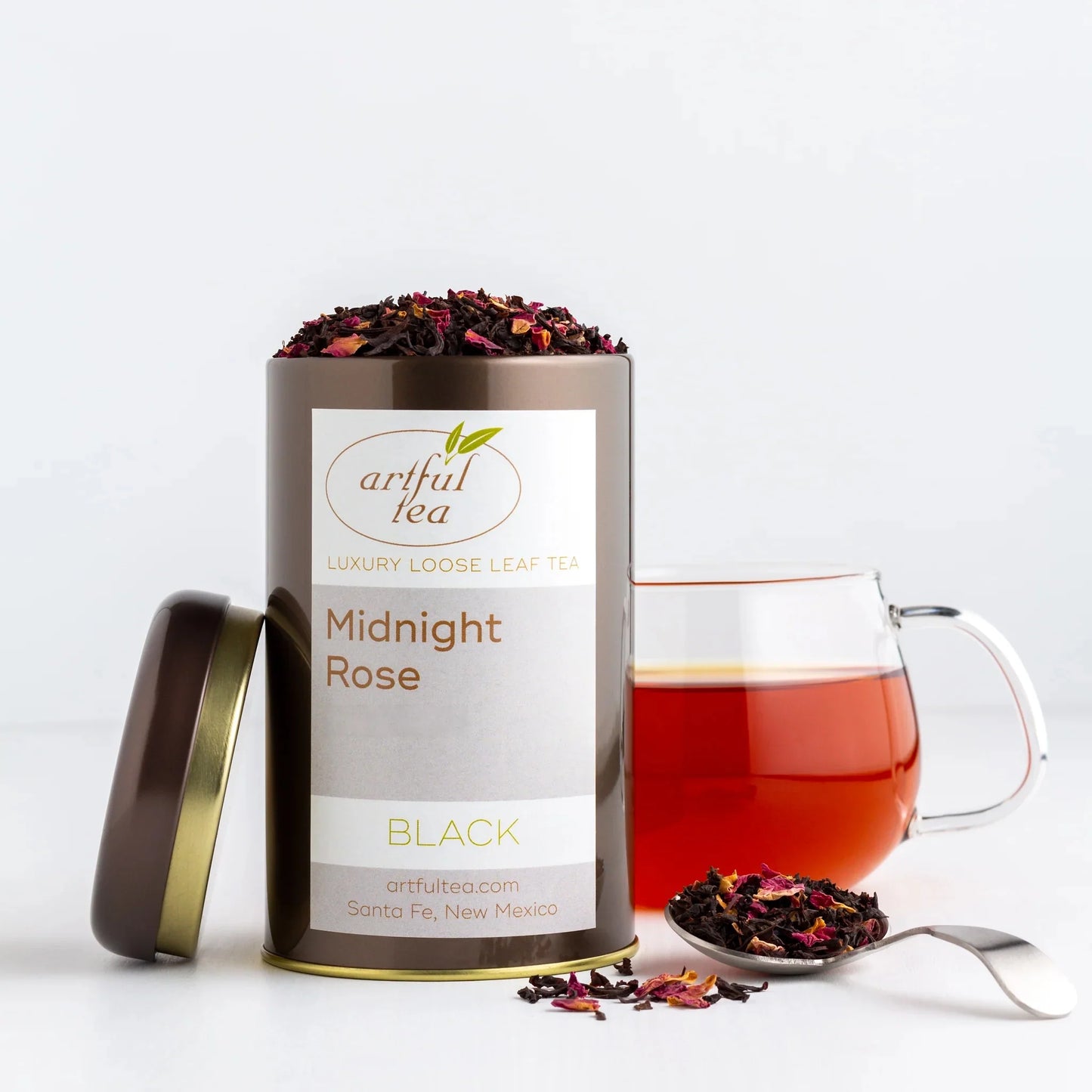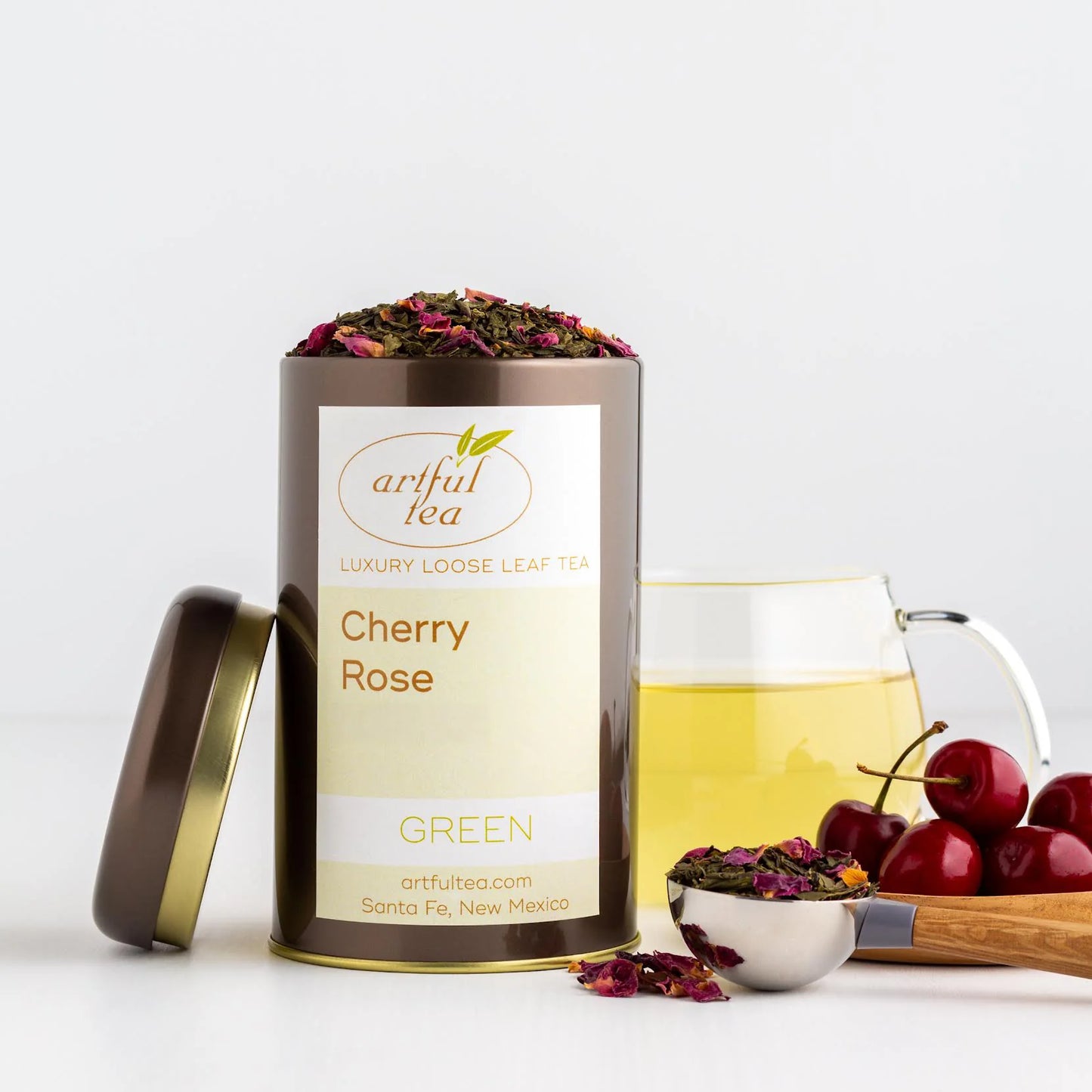The best floral teas
From floral black teas to soothing herbal blends, here are some of the most popular types of tea made with flowers.
1. Jasmine teas
Jasmine tea is a type of tea that is lightly scented with fresh jasmine blossoms. When it comes to the highest quality jasmine teas, loose leaf tea leaves are scented by laying a tray of jasmine blossoms underneath a tray of tea leaves overnight, when the jasmine blossoms are at their most fragrant. Other tea blends sometimes blend jasmine flowers directly with the tea.
Jasmine has been shown to reduce stress and improve mental clarity. Jasmine teas often have a green tea base, but you can also enjoy white, black, and oolong jasmine-scented teas.
Our pick: Jasmine Yin Cloud Green Tea
Jasmine Yin Cloud features a Chinese green tea lightly scented with fresh jasmine blossoms. This floral, aromatic tea is one of our most popular green teas. Delicious enjoyed hot, it also makes a great iced tea!
2. Rose teas
Whether you’re dreaming of a romantic afternoon tea with your sweetheart or just want to insert a little whimsy into your day, rose teas are a lovely option. Rose petals are often blended with black or herbal teas for a soothing floral note.
Rose tea benefits include lowering anxiety, reducing inflammation, and imparting a sense of calm and wellbeing.
Our pick: Rose Tea Trio
Our Rose Tea Trio features three of our most popular rose teas:
- Midnight Rose is a smooth, floral, aromatic blend featuring Chinese black tea and rose petals.
- Cherry Rose combines green tea, rose petals, and cherry flavor for a tea reminiscent of springtime cherry blossoms.
- Rose Petal Raspberry features rose petals, raspberry, hibiscus, lemon peel, rosehips, and apple for a silky, aromatic tea that's fruity, tart, and refreshing.
3. Lavender teas
Soothing lavender tea blends are another popular type of floral tea. While lavender is too strong to be used on its own as a single-ingredient tea, it’s often added to tea blends to impart a floral note. Lavender is known for its calming, stress-relieving properties, and can also boost your mood and help you to sleep better at night. Lavender is often added to both caffeinated and herbal tea blends.
Our pick: Lavender Lullaby Herbal Tea
Need a little help relaxing and falling asleep? Give this calming blend a try. We created this tea for customers looking for a natural blend to help them sleep. With chamomile, lavender, roses, sweet orange peel, and calendula petals, this handcrafted herbal infusion helps soothe away the day to promote more peaceful rest.
4. Chamomile teas
Chamomile is a classic single-ingredient floral herbal tea that’s also a popular ingredient in a variety of herbal tea blends. Chamomile tea is light, soothing, and a great option to enjoy before bed or when winding down at the end of a long day. Some of the benefits of chamomile tea include reducing stress, soothing sore throats, and boosting your immune system.
With large, flavorful flower heads and a honey-like natural sweetness, this tea is delicious all on its own. It also makes a great base for tea-based cocktails.
Our pick: Chamomile Tea Trio
Our Chamomile Tea Trio features three of our most popular chamomile blends:
- Egyptian Chamomile features large, fragrant chamomile flower heads with a mellow natural sweetness and notes of straw, honey, and apples.
- Lavender Lullaby blends chamomile with lavender, roses, sweet orange peel, and calendula petals for a peaceful, soothing infusion.
- Honeybush Hot Cider combines chamomile with rooibos, apple, cinnamon, orange peel, and licorice root for a sweet, spiced herbal blend.
5. Hibiscus teas
While many floral teas are light and delicate, hibiscus imparts a fruity, citrusy taste reminiscent of cranberry juice. Hibiscus can be enjoyed on its own, but is also often used as a base for a wide variety of herbal tea blends.
Some of the many benefits of hibiscus tea include a high vitamin C content and high antioxidant levels. Hibiscus is sometimes also known as roselle, and is delicious as an iced tea. Pro tip: combine iced hibiscus tea and lemonade for a tart, refreshing summer drink.
Our pick: Hibiscus Herbal Tea
Our hibiscus tea consists of large parts of the dried flower, not a lot of broken pieces, which makes for an extra flavorful cup. This tea brews into a delightfully tart stand-alone tea, and also makes a nice addition to other teas (try it with lemonade for a thirst-quenching treat in summer!)
6. Other floral teas
In addition to the floral teas mentioned above, there are many other types of tea that feature flower petals. Other popular floral teas include Butterfly Blue Pea Flower herbal tea and chrysanthemum herbal tea.
7. Teas with floral notes
Certain teas don’t contain any flower petals, but are still described as having floral notes. For example, classic teas like White Peony white tea and Fine Ti Kuan Yin oolong tea are notable for their flower-like taste. In these cases, the teas don’t contain any actual flowers, but have a delicate floral aroma and flavor.
How to make floral tea
How to brew floral tea depends on the specific type of tea. For black and herbal floral teas, we recommend using one teaspoon of tea leaves for every six ounces of water in your pot or cup and using water that has reached a full boil. For other types of floral blends, like floral green teas and floral white teas, we generally recommend using water with a lower temperature and infusing the tea for a shorter amount of time.
If you’re making floral tea at home using your own dried flowers, it’s important to make sure that the flowers are safe to eat and don’t contain any pesticides or harmful ingredients.
Our floral teas
We carry many delicious and flavorful floral tea blends! Whether you’re looking for a floral herbal tea, a caffeinated tea blended with flower petals, or even just a classic, unflavored tea with floral notes, we have plenty of options to choose from.
FAQs
Are herbal teas the same as floral teas?
While some herbal teas are floral teas, not all floral teas are herbal teas. Flowers can also be added to caffeinated blends for a soothing floral note. Some teas, like chamomile and hibiscus, are single-ingredient floral herbal teas, while other herbal blends feature dried flowers in addition to other herbs and spices.
What sweetener works best in floral teas?
While you can use any sweetener you like in a floral tea blend, a dollop of honey is a great choice that works well to complement the floral notes in your tea. Our raw, unfiltered Mt. Tam honey is delicious when paired with floral teas. You can also sweeten floral teas with sugar or a sweetener of your choice.
Can you use dried flowers for tea?
You can use edible dried flowers to create your own homemade tea blend. While some floral teas, like chamomile or hibiscus, may contain only one ingredient, in most cases floral tea blends contain more than just flowers. Rose petals and lavender, for example, are often used to accentuate tea blends rather than as a sole ingredient. If you plan to use your own dried flowers for tea, make sure that the flower petals are safe to eat and free from pesticides.
